Foreword
Our world is facing an existential threat from the climate and biodiversity crises. We need to stop biodiversity loss and increase the vitality of nature. We also need to drive our net emissions down to zero by 2050 to meet the targets set in the Paris Agreement to limit global warming.
Historically, CO2 emissions have tended to increase alongside economic growth. To reduce CO2 emissions to zero by 2050, this link between emissions and economic growth needs to be broken – what is known as “emissions decoupling”. However, some seem to worry that emissions decoupling is not possible at the necessary speed and scale to meet the targets set in the Paris Agreement and that the economy should decline compared to the current levels. Others worry that low or negative economic growth would make emission reductions very difficult or impossible, since significant investments in new low-carbon technologies are needed. New investments, again, boost economic growth.
Sitra commissioned this study to investigate whether and under what assumptions and policy measures the decoupling of CO2 emissions from economic growth could occur at a sufficient rate for CO2 emissions to decline to net zero by 2050. The analyses were carried out on a global level, but some of the economic impacts are presented separately for the EU and Finland as well. As the topic of emissions decoupling alone is extensive, this study does not cover wider environmental considerations, such as the effects on biodiversity or on materials and resource use. It is strongly recommended that these important issues be analysed in other studies.
The results of this study show that deep CO2 emission cuts in line with the 1.5 °C target and positive GDP growth can occur at the same time. However, it requires profound changes in most of society’s fundamental techno-economic systems as well as fast development and deployment of negative-emission technologies. Further, the results do not mean that simply aiming for positive economic growth would be sustainable or sufficient to keep us within the planetary boundaries. On the contrary, the results show that economic growth can result from ambitious climate policies and improved productivity. On the other hand, overlooking costs to the environment from the pursuit of economic growth would result in significant economic damage.
The results underline the importance of fast emission reductions and a strong policy regime across the whole world to reach the 1.5 °C target and to enable emissions decoupling. In particular, quickly reducing the use of coal seems vital. Additionally, efforts should be made to obtain more negative-emission technologies (NETs) that would safely and permanently remove carbon already accumulated in the atmosphere.
A natural next step would be to also analyse in detail the decoupling of other harmful environmental impacts from economic growth. For example, a global shift to more circular business models could reduce CO2 emissions and help cut the use of materials and natural resources while maintaining economic growth. The importance of NETs on the emission-reduction pathways presented in this study stress again the need to analyse in detail the land-use and biodiversity impacts of wide-scale use of NETs.
We thank the whole consortium of researchers involved in this study for their great efforts to shed more light on the discussion on emissions decoupling.
The aim of this study is to open and encourage the necessary discussion on decoupling, to help us all build a sustainable future – a society that thrives within the limits of the earth’s capacity.
Helsinki, 18 January 2021
Mari Pantsar
Director
Saara Tamminen
Leading specialist
Executive summary
1. Rationale and motivation for this report
“Net-zero emissions by 2050” is the new target for climate policy, following the goal stipulated in the 2015 Paris Agreement of “holding the increase in the global average temperature to well below 2 °C above pre-industrial levels and pursuing efforts to limit the temperature increase to 1.5 °C above pre-industrial levels” (UNFCCC, 2015). The aim of this study is to use energy system and macroeconomic models to explore whether and how these objectives could be reached and, in particular, whether achieving them is compatible with continuing economic growth through to 2100.
With its focus on the objectives of the Paris Agreement, the study does not consider wider environmental issues that may be affected by changes in the energy system, such as the use of non-energy natural resources and land use for bioenergy, with implications for biodiversity. These issues are important and should be taken into account in decisions about the quantity and location of any bioenergy that may be used to help to meet the Paris targets. The models used also cannot take into account the changing impacts on material use and emissions of moving towards either a low-carbon energy system or a circular economy. If greater circularity in material use were to significantly reduce the extraction and processing of primary materials, then it may be that this could be another source of emission reduction. However, this is not analysed here and warrants further study.
2. Existing knowledge about the relationship between emissions and economic growth
Global greenhouse gas (GHG) emissions, which are responsible for anthropogenic global warming, have increased along with growth in the economy since records began. This is not surprising, as the major source of GHGs are CO2 emissions, which come from burning fossil fuels. Fossil fuels have been the predominant source of energy since the Industrial Revolution, and energy use is at the heart of most economic activity. The question to be addressed by this report is, if emissions are reduced at the rate required to achieve the Paris target, can the economy keep on growing? In other words, can emissions be “decoupled” from economic growth?
The evidence that this may be possible comes from the European Union and some individual member states. Between 1990 and 2016 the EU economy grew by more than 50%, while CO2 emissions from fuel combustion fell by 25%. Moreover, in Finland and the UK, even consumption-based emissions (which include emissions from the manufacture of imports but exclude the emissions from manufacturing exports) fell from 2007 to 2016. However, the rate of emissions reduction over these periods was nowhere near fast enough to meet the Paris target, so such evidence is not conclusive that economic growth could continue if emissions were to be reduced much faster.
The energy-related emissions reduction that occurred in these economies came about through three main drivers:
- increasing efficiency in the use of energy;
- replacing fossil fuels with low- or zero-carbon energy sources;
- structural changes in the economy involving increasing consumption of low-carbon services and the offshoring of energy-intensive industries (though the calculation of consumption emissions takes this latter effect into account).
These drivers have been combined in different ways and to different extents in the UK and Finland, but a common characteristic is that they have been driven by public policy stimulating and reinforcing some market forces and constraining others.
It is evident that achieving the Paris targets will require a considerable intensification of the policies that have generated or reinforced these drivers, as will be seen.
3. Existing knowledge about the 1.5 °C target
The 2018 Special Report on 1.5 °C from the Intergovernmental Panel on Climate Change (IPCC) set out the existing knowledge on the emissions, technology and economic implications of attaining the Paris 1.5 °C target. The IPCC report reviewed numerous scenario exercises with different input assumptions to determine whether and how easy it was to reach the Paris targets under different assumptions about world developments. The starting point was a set of five scenarios called the Shared Socio-economic Pathways (SSPs), which differ according to various assumptions. These include population and economic growth rates, trade intensity, environmental concern, rates of technological development and international co-operation. These are described in more detail below.
Using these broad assumptions, the modellers then chose the values of parameters that seemed broadly consistent with them in the following areas:
- Developments in economic structure and output
- Energy demand and efficiency
- Material demand and efficiency
- Use of low-carbon energy carriers and technology
- Availability and use of Carbon Capture and Storage (CCS) and Negative Emission Technologies (NETs)
- Land use and the availability of biomass for energy
- Choice and implementation of policy measures
- Costs of carbon reduction technologies.
Depending on the assumptions and models used, a wide variety of different pathways of GHG emission reduction were generated. Many of them were in line with the Paris target of limiting warming to 1.5 °C by 2100, though usually not without overshooting it in the later decades of this century (as happened also in the modelling in this study, as discussed further below). These scenarios also showed continuing growth in the economy, and in general the reduction in economic growth by 2100 from a baseline without decarbonisation (which did not include any costs from climate change and was therefore probably optimistic) was small. Certainly, none of the scenarios came anywhere near declines in economic output from the 2020 level (i.e. they all experienced economic growth). The scenarios therefore all exhibited “decoupling”.
The modelling carried out in this project sought to explore this phenomenon more deeply and to explain, if the models used in this study exhibited the same result, why this result came about and what the reasons for it were.
4. The modelling approach in this study
This study has used two energy system models (PRIMES and TIAM-UCL) and one computable general equilibrium (CGE) macroeconomic model, GEM-E3 FIT. The energy system models show how energy demands could be met until 2100 while seeking to reduce CO2 emissions to net zero in 2050 and to limit the global temperature increase to no more than 1.5 °C by 2100. As will be seen below, it turned out that the models with the assumptions discussed below could only reach net-zero CO2 emissions in 2055 (not 2050). The temperature target of a maximum increase of 1.5 °C by 2100 could be reached, but only with overshooting in later decades of this century, as noted above. However, for simplicity, the text below continues to refer to the 2050 net-zero target for CO2 emissions.
The macroeconomic model projects the economic output using the energy demands and technologies, and associated costs, that are generated by the energy system models in their carbon reduction scenarios. How the models have been combined is described in the report below, and the models themselves are described briefly in Annex 1 to this report.
The starting point for the scenarios explored in the modelling was the SSP1 scenario, which, because of its assumptions about how the world develops, is most favourable for global decarbonisation. The assumptions include global co-operation, rapid technology development, strong environmental policy, low population growth, declining inequality, dietary shifts and forest protection. The use of any of the other SSPs would have made decarbonisation more difficult and expensive, and this should be borne in mind when interpreting the results. However, all the assumptions in SSP1, while not necessarily pertaining to today, may be considered reasonable.
As already noted, the macroeconomic model takes the results from the energy system models through to the end of the century and projects the economic outcomes. There are essentially three drivers of economic growth in GEM-E3 FIT, as in other macroeconomic models: population growth, net investment and technical progress. Economic growth for the world as a whole could be negatively affected by decarbonisation if it raises the cost of energy or reduces rates of technical progress. With renewable electricity now competitive with that produced from fossil fuels in many countries, the impact on economic growth from the switch to zero-carbon energy sources seems likely to be limited and may even be positive. With regard to technical progress, this is likely to be stimulated by decarbonisation, with fossil-fuel industries being relatively mature and low-carbon energy generating whole new industries. At a national level, additional key considerations for the impacts of decarbonisation on economic growth are whether investments in low-carbon energy generate a domestic supply chain or imports, whether they result in a reduction in the net imports of fossil fuels (and, conversely for fossil fuel-exporting countries, whether they reduce exports of these fuels), and whether such activities draw on unused resources (capital or labour) or result in the “crowding out” of other activities. These issues are explored further below.
5. The scenarios
As noted above, the starting point for the scenarios to be modelled was the SSP1 assumptions. These assumptions produced energy demands from the PRIMES and GEM-E3 FIT models, which were fed into the global energy system model TIAM-UCL, which has a detailed representation of energy supply and demand technologies across the energy system. TIAM-UCL was constrained to produce net-zero CO2 emissions in 2050, and a maximum global average temperature increase in 2100 of 1.5 °C (as projected using TIAM-UCL’s in-built climate module). This was the central decarbonisation scenario (hereafter “the central scenario”), the results of which are shown in the next section.
Inspection of these results showed that two factors, concerning which there is considerable uncertainty, were important in generating the central scenario results: 1) the rate of phase-out of coal use; and 2) the availability of CCS and NETs, which were heavily used in the central scenario. In order to explore the sensitivity of the results to these factors, further model runs were carried out with:
- half the rate of coal phase-out in the central scenario;
- no availability of CCS and NET technologies;
- a combination of the reduced rate of coal phase-out and no availability of CCS and NET technologies.
6. Results
6.1 The central decarbonisation scenario
Figure 1 shows the CO2 emissions trajectory for the central scenario.
It can be seen that emissions reach net zero in 2055, missing the 2050 target. The average global temperature increase in 2100 is just below 1.5 °C, but it reaches nearly 1.9 °C around 2050, before declining to the end of the century. This temperature reduction is caused by a substantial use of CCS and NETs technologies (the bars below the zero-emission line), which by 2100 are capturing and storing carbon emissions or removing carbon from the atmosphere, in excess of 10 GtCO2 per year. This outcome is broadly comparable to those of the SSP1 IPCC studies discussed above. However, there is significant uncertainty as to whether, even if it were possible to deploy CCS and NET technologies on this scale, the climate would respond in such a way as to reduce global average temperatures as shown.
Figure 2 and Figure 3 show the primary energy and electricity use in the central scenario respectively.
Figure 2 shows the huge growth in the use of wind and solar resources. This is used, as shown in Figure 3, to decarbonise almost completely the electricity system in 2100, even while it generates seven times as much electricity as in 2010. This extra electricity goes to decarbonise heat in buildings, mainly cars in transport, and some industrial processes. Hydrogen is also used in transport for HGVs, buses, trains, ships and some cars, while aviation largely switches to biofuels. Such natural gas, oil and coal as remains in the energy system is largely used in industry in sectors that are hard to decarbonise (e.g. steel and cement).
The economic implications of this revolution in the energy system are shown in Figure 4 and Figure 5.
Figure 4 shows how the drivers of economic growth develop under decarbonisation. Population growth falls away over the century, leaving continuing growth in investment and technical progress, but at lower rates. Figure 5 shows that this results in continuing economic growth over the century (note the compressed scale in the later years), although per capita GWP growth in 2100 is about half what it was in 2020. Even so, the world economy in 2100 is nearly four-and-a-half times its size in 2015, having grown at an average rate of 1.76% p.a. over the period 2015-2100.
6.2 The sensitivity runs
Table 1 presents the results of the sensitivity runs, which focus on technologies and dynamics that are important in the central scenario but characterised by considerable uncertainty.
Table 1: Sensitivity results
| Central scenario | Slow coal phase-out | No CCS or NETs | |
| Coal phase-out rate | 5.4% p.a | 2.7% p.a. | 5.4% p.a 2.7% p.a |
| Net-zero date | 2055 | 2055 | – |
| Offset emissions from CCS, BECCS and DAC (2020-2100) | 583 GtCO2 | 638 GtCO2 | 0 GtCO2 |
| Peak temperature | 1.87 °C | 1.89 °C | 1.89 °C 1.92 °C |
| Final temperature by 2100 | 1.5 °C | 1.5 °C | 1.74 °C 1.79 °C |
With a slower coal phase-out it is still possible to reach the 1.5 °C target by 2100, but only by making significantly greater use of CCS and NETs – the cumulative emissions stored or removed by these technologies rise from 583 GtCO2 to 638 GtCO2, compared to total CO2 emissions in 2020 of around 40 GtCO2. The peak temperature under this scenario rises from 1.87 °C to 1.89 °C. If CCS is not available, even with the fast coal phase-out, cumulative CO2 emissions double over the central scenario, and it is no longer possible, with the rest of the assumptions of that scenario, to keep the temperature rise to 1.5 °C by 2100 – it rises to 1.74 °C by then.
Slow coal phase-out reduces GWP growth minimally compared to the central scenario, especially during the period 2030-2060, since other more expensive emission-reduction options have to be used for emission reductions. Notwithstanding, GWP continues to grow during the entire period to 2100. Lack of CCS and NETs does not affect GWP growth much.
7. Policy implications
The modelling results of this study clearly suggest that, with stringent public policy, the Paris target of a maximum warming of 1.5 °C in 2100 is feasible, albeit with overshooting this temperature increase in the decades after 2050, and that this can be achieved with continuing global economic growth. However, for this outcome public policy will need to generate increases in energy efficiency, investment in renewables, coal phase-out and CCS and NETs deployment at rates that greatly exceed anything that has yet been achieved at the global level. Moreover, the results also rest on the assumption that the removal of CO2 from the atmosphere by future deployment of CCS and NETs will cause the global average temperature to fall as shown. Avoiding the uncertainties related to this and the possibility of triggering tipping points would require emissions to be reduced even faster than the already unprecedentedly fast rates shown in the modelling.
Decarbonisation at scale and at speed will require a mix of different policy instruments and approaches to remove the many barriers and constraints that impede it. The instruments and approaches include regulation, consumer information, digitalisation, carbon pricing, infrastructure provision, innovation support, and institutional and behaviour change across a range of policy areas. The changes required are both systemic and transformational. Most of society’s fundamental techno-socio-economic systems will need to be refashioned: the energy system and the transport system; how buildings are constructed, and how businesses and individuals occupy and heat and cool them; the food system, what people eat and where it comes from; and how practically everything is made, used and disposed of at the end of its life.
The policy approaches to achieve this transformation must be consistent, coherent, credible and comprehensive to be effective, and be projected to be maintained over the decades that the low-carbon transition will take, so that the businesses that invest in the products and processes of decarbonisation in the various systems know that they will get the financial return that such investment requires.
No government in the world is yet close to the kind of policy architecture that will enable its country to achieve the level of emission reductions that would play its part in achieving the global goals of the Paris Agreement, and reaching the Paris target will require all the world’s major emitters to do so. The 2020s is the decade that will either put the world’s emission trajectory on track for this target or put it beyond reach.
8. Conclusions
This study began by enquiring what the conditions were for the world to achieve net-zero CO2 emissions by mid-century and to limit the average global temperature increase to 1.5 °C by 2100. Evidence from the IPCC has already shown that it is possible to reach 1.5 °C by 2100 under the wide range of future worlds characterised by the SSP scenarios – but not under all of them. The baseline assumptions that make it easiest to reach the Paris targets are global co-operation, rapid technology development, strong environmental policy, low population growth, declining inequality, dietary shifts and forest protection, and these assumptions provided the foundation for the modelling in this study. Absence of any of these assumptions would make the achievement of the Paris 1.5 °C target more difficult or impossible.
The modelling quantified the Paris-consistent level of some of these factors:
- Increases in energy efficiency need to slow the growth of global primary energy demand so that in 2100 primary energy demand is little more than it is in 2020.
- The deployment of renewable technologies needs to decarbonise electricity generation almost completely by 2100 and produce seven times as much power as the world used in 2010, in order to replace fossil fuels in transport, heating and in some industrial processes.
- The use of coal must be phased out globally as fast if not faster as it has reduced in the USA in recent years.
- CCS technologies need to be installed at scale from 2030 to prevent residual industrial emissions from getting into the atmosphere.
- Soils and trees need to become carbon sinks on a large scale, and this will need a significant reduction in the amount of meat in the diets of the world’s middle class.
- And there need to be, through innovation and deployment at scale, the kinds of reduction in the costs of hydrogen technologies as have already been seen in the generation of electricity from renewable sources.
None of this will happen without a strong and comprehensive policy framework. In the past it has been assumed by many that reductions in emissions on the scale required would be bound to require economic contraction, at least in the industrialised countries. The remarkable thing about modelling in this area is that there is unanimous agreement that this does not need to be the case. Every study of Paris-compliant economic development through to 2100 has shown global economic growth over this period, though with considerable differences in national impacts, depending on whether countries are fossil-fuel importers or exporters. Certainly, investment needs to take a larger share of national income, to create the new infrastructures and industries required by a zero-carbon world, but average levels of income across the world can keep growing. Policymakers need to understand this new reality, created by the enormous reductions in renewables costs that have already been achieved. This will not make the policies that they need to introduce easy to implement, but it means that they can be couched in a narrative of transformation towards greater prosperity in contrast to the very large climate damage costs that an absence of these policies seems likely to bring about.
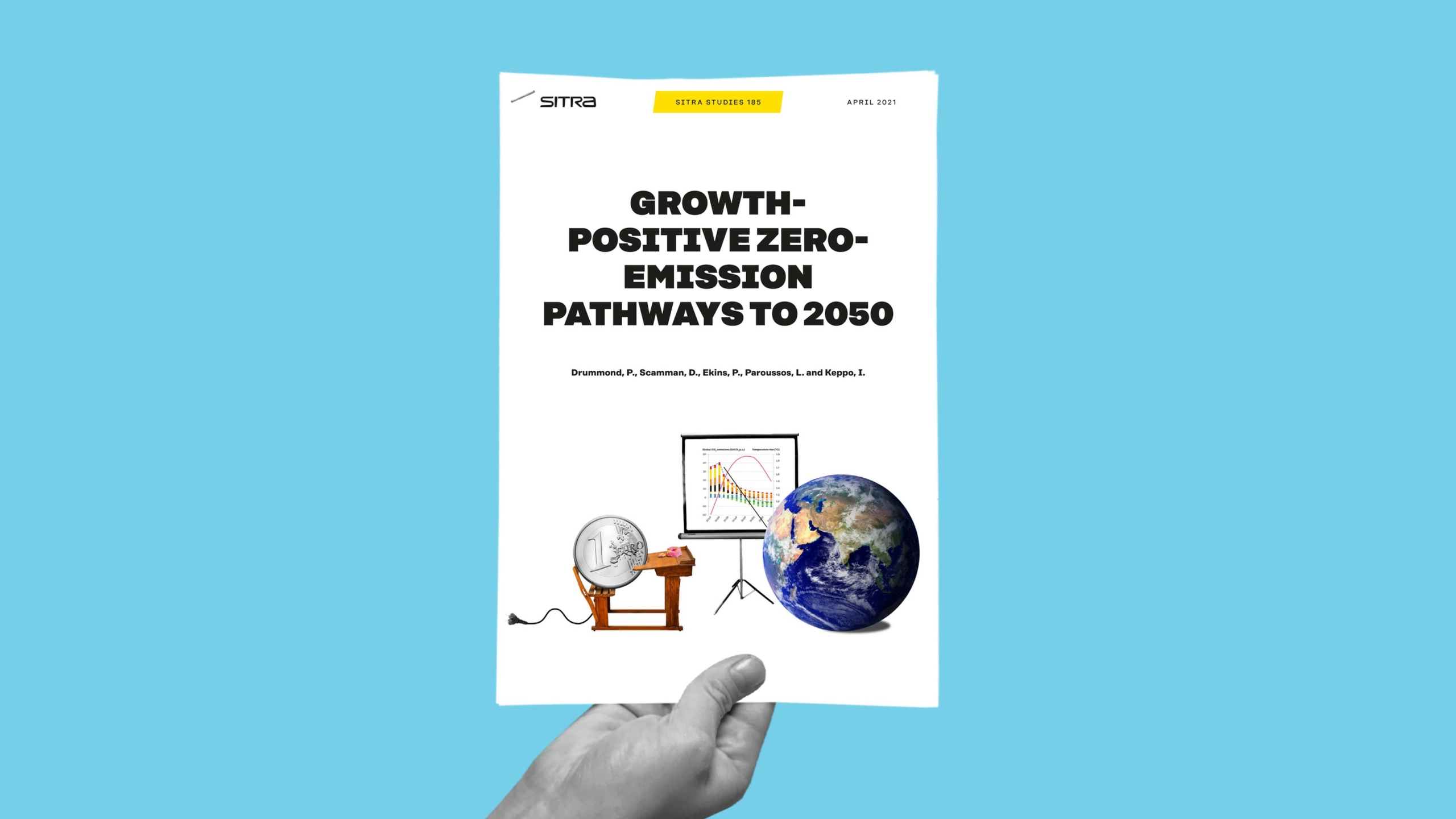
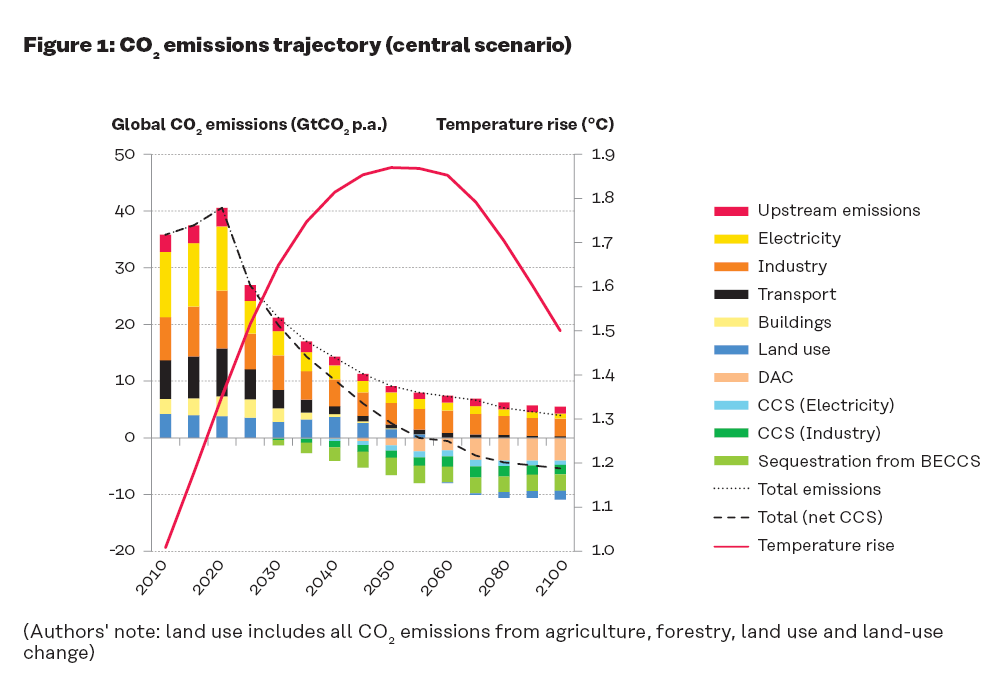
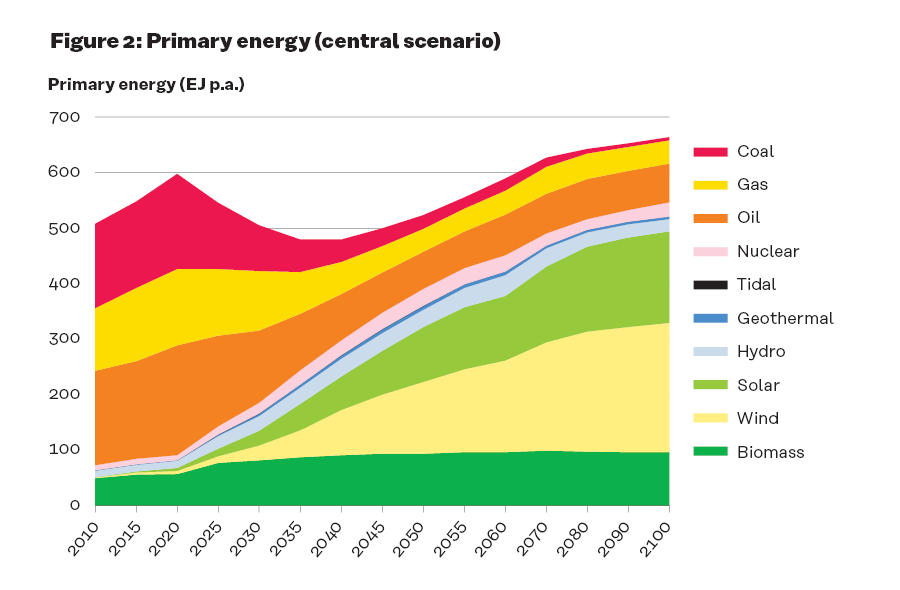
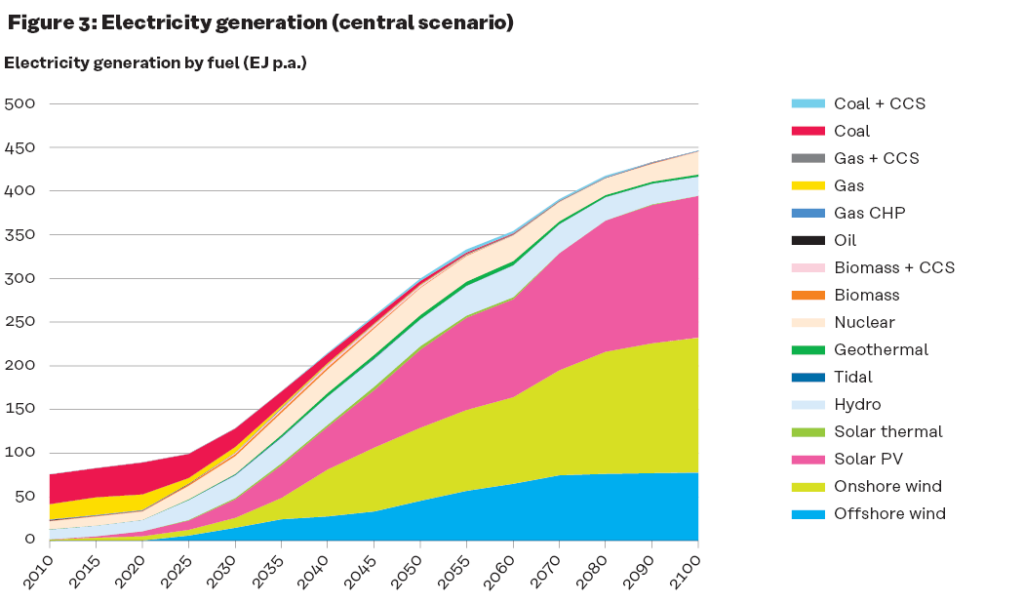

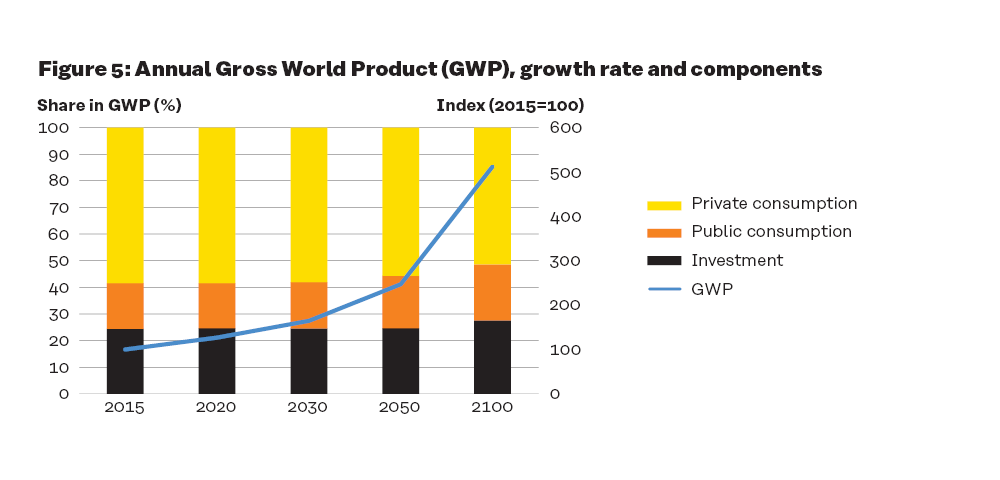















Recommended
Have some more.